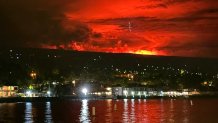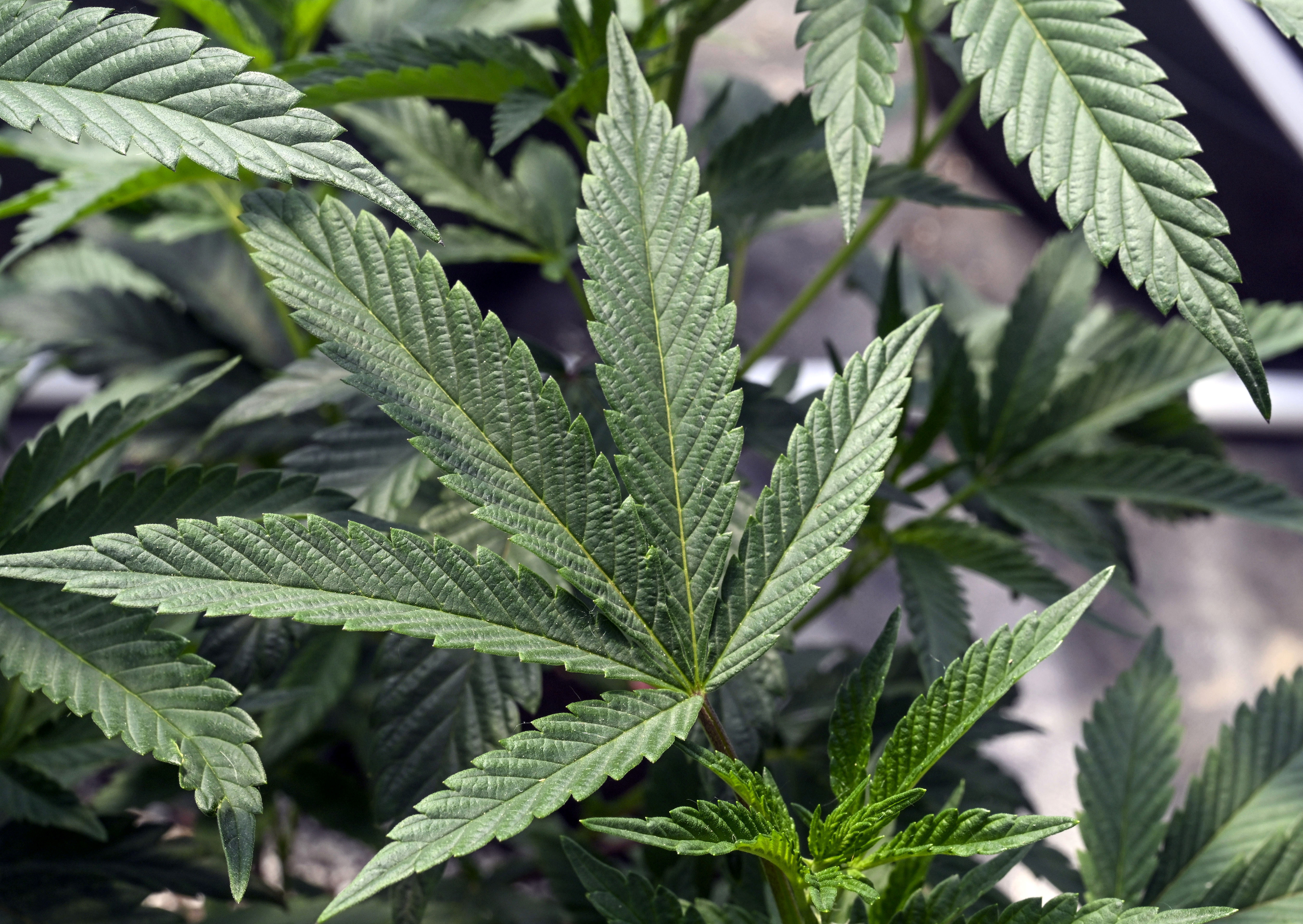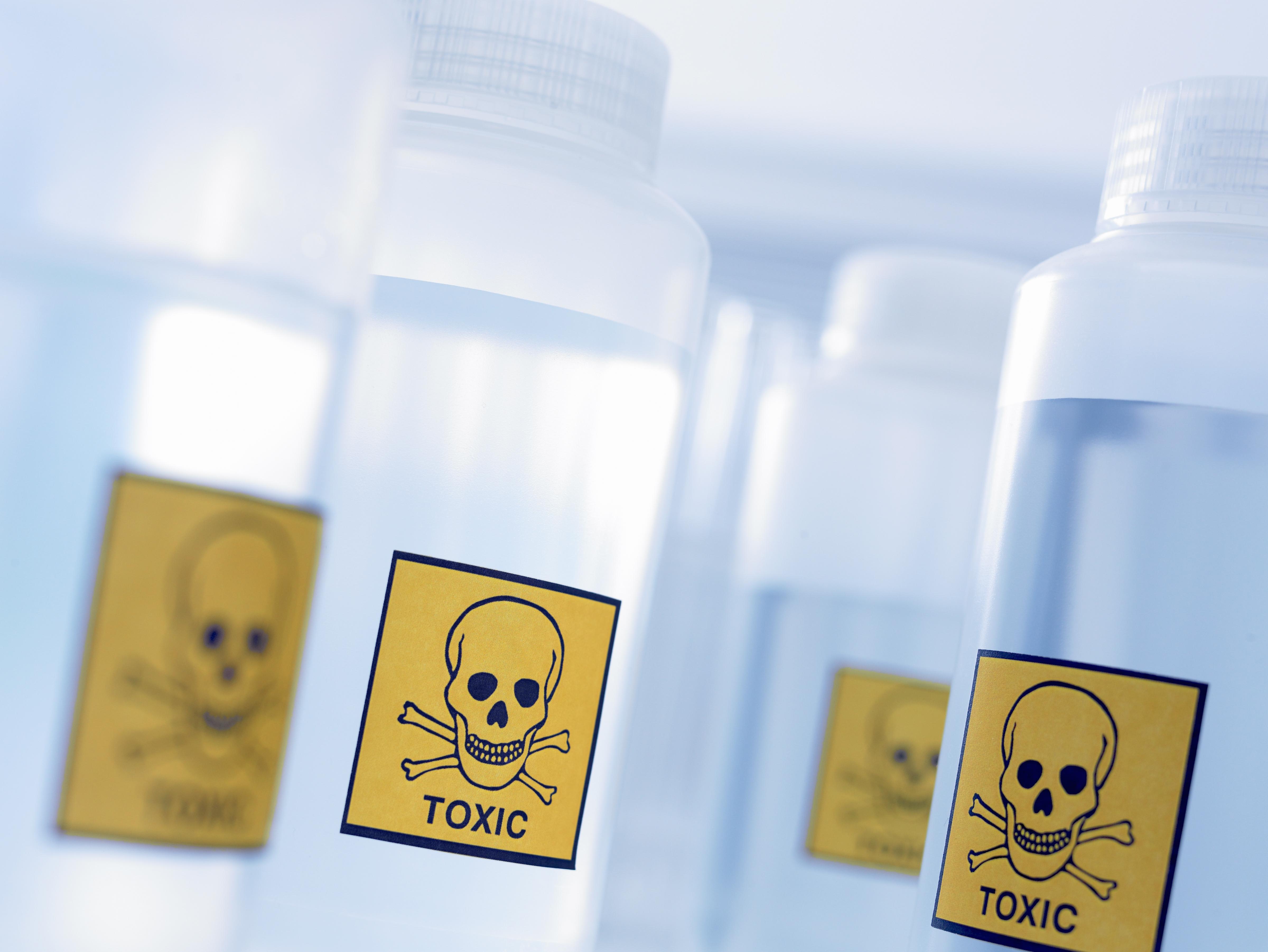Hawaii’s Mauna Loa, the world’s largest active volcano, began spewing ash and debris from its summit, prompting civil defense officials to warn residents on Monday to prepare in case the eruption causes lava to flow toward communities.
The eruption began late Sunday night in the summit caldera of the volcano on the Big Island following a series of closely spaced, fairly large earthquakes, Ken Hon, the scientist-in-charge at the Hawaiian Volcanos Observatory, said at an early morning news conference. Magma moved to the surface, although lava flows were contained within the summit area and weren't threatening nearby communities.
A time-lapse video of the eruption from overnight shows molten lava lighting up the caldera, moving across it like waves on the ocean.
There have been some photos provided to the Hawaiian Volcano Observatory that suggest that the south end of the caldera has overflowed, causing some lava flows a few kilometers (miles) out of the caldera, Hon said.
Get San Diego local news, weather forecasts, sports and lifestyle stories to your inbox. Sign up for NBC San Diego newsletters.
In some previous eruptions, lava has overflowed the caldera but never made it close to populated areas.
"Right now we are looking at indications, trying to figure out if this is going to be an eruption that remains within the summit of Mauna Loa or moves down one of the rift zones either to the southwest and to the northeast," Hon said.
“We don’t want to try and second guess the volcano,” Hon said. “We have to let it actually show us what it’s going to do and then we inform people of what is happening ASAP.”

There is currently no indication of any migration of the eruption into a rift zone, officials said. A rift zone is where the mountain is splitting apart and the rock is cracked and relatively weak - making it easier for magma to emerge.
U.S. & World
“At this time, it’s not a time to be alarmed,” Big Island Mayor Mitch Roth said.
There are no evacuation orders.
Even though it noted there is no indication of lava moving into a rift one, Hawaii County Civil Defense announced it has opened shelters in Kailua-Kona and Pahala because it has reports of people self-evacuating along the South Kona coast.
Scientists will have to wait to see if this remains a summit-only eruption or a rift zone eruption. The average Mauna Loa eruption is not typically prolonged, lasting a couple of weeks, Hon said.
“Typically, Mauna Loa eruptions start off with the heaviest volume first,” Hon said. “After a few days, it starts to calm down a little bit.”
The USGS warned residents at risk from Mauna Loa lava flows should review their eruption preparations. Scientists had been on alert because of a recent spike in earthquakes at the summit of the volcano, which last erupted in 1984.
Portions of the Big Island were under an ashfall advisory issued by the National Weather Service in Honolulu, which said up to a quarter-inch (0.6 centimeters) of ash could accumulate in some areas.
Mauna Loa is one of five volcanoes that together make up the Big Island of Hawaii, which is the southernmost island in the Hawaiian archipelago.
Mauna Loa, rising 13,679 feet (4,169 meters) above sea level, is the much larger neighbor to Kilauea volcano, which erupted in a residential neighborhood and destroyed 700 homes in 2018. Some of its slopes are much steeper than Kilauea’s - so when it erupts, lava can flow much faster.
During a 1950 eruption, the mountain’s lava traveled 15 miles (24 kilometers) to the ocean in less than three hours.
Tourism is the economic engine for Hawaii, but Roth predicted few problems for those on vacation during the eruption.
“If it does go into one of the rift zones, it’s going to impact a very small area of the island,” he said. “It will be spectacular where it is, but the chances of it really interrupting the visitor industry — very, very slim.”
For some, the eruption might cut down on some travel time, even if there is more vog, or volcanic smog caused by higher sulfur dioxide emissions.
“But the good thing is you don’t have to drive from Kona over to Hawaii Volcanoes National Park to see an eruption anymore,” Roth said. “You can just look out your window at night and you’ll be able to see Mauna Loa erupting.”
___
Associated Press writer Mark Thiessen in Anchorage, Alaska, contributed to this report.



